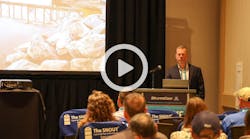
We’ve talked a lot about infrastructure in all of Forester Media’s publications—what’s wrong with it, how to fix it, and how much that might cost. I was recently reading an article that, on the face of it, had nothing whatsoever to do with infrastructure—it was about the health care situation in the US—when I was surprised to see the author veer into a seemingly irrelevant anecdote. In 1967, he wrote, a bridge across the Ohio River suddenly gave way during rush hour: “A shotgun-like blast rang out. It was the sound of a critical link in the bridge’s chain-suspension system giving way. In less than a minute, 1,750 feet of the 2,235-foot span collapsed, and seventy-five vehicles dropped into the river, eighty feet below.” Forty-six people died.
What does this have to do with the American health care system? His point was that, beginning with that incident, the National Transportation Safety Board started focusing on how to prevent similar ones. Until then, officials had paid more attention to new construction and had employed “reactive strategies” with older ones. Although routine inspections could have predicted the disaster—the bridge was corroded, and it had been designed to handle far less traffic than it was carrying—no one had bothered to look. At the time of its collapse the bridge was nearly 40 years old, and many around the country were much older: “Our system was entering middle age, and we didn’t have a plan for it.”
The author argues that “incremental care”—inspections for bridges, highways, and water systems, and regular medical checkups for humans—can avert larger and more costly problems down the road. Yet even today, in our infrastructure and our medical system, we often divert money and resources from the routine inspections to handle the emergencies. Sally Jewell, who was Interior Secretary during the Obama Administration, made a similar point two years ago in discussing firefighting efforts: “The conditions we are experiencing this fire season are stretching our resources and may force us to divert funds from prevention and restoration efforts just to keep up with fire suppression costs.” What we need, she noted, is a system that “would give us the flexibility to fight these fires without taking away from important efforts like forest and rangeland restoration, fuels management, and proactive community protection.”
The author of the health care article is a surgeon, and the article came about because of an argument he had with a colleague—a specialist in internal medicine, not a surgeon—about who made the most difference in their patients’ lives. Surgeons’ work is usually more dramatic, but the internist argued that long-term routine care can have a greater effect on mortality rates. The surgeon eventually, somewhat grudgingly, agreed, but he still doesn’t see the funding situation changing, for either health care or public infrastructure.
“We still have almost a hundred and fifty thousand problem bridges,” he writes. “Sixty thousand have traffic restrictions because they aren’t safe for carrying full loads . . . The pattern is the same everywhere: despite knowing how much cheaper preservation is, we chronically raid funds intended for incremental maintenance and care, and use them to pay for new construction. It’s obvious why. Construction produces immediate and visible success; maintenance doesn’t. Does anyone reward politicians for a bridge that doesn’t crumble?”
About the Author
Janice Kaspersen
Janice Kaspersen is the former editor of Erosion Control and Stormwater magazines.

